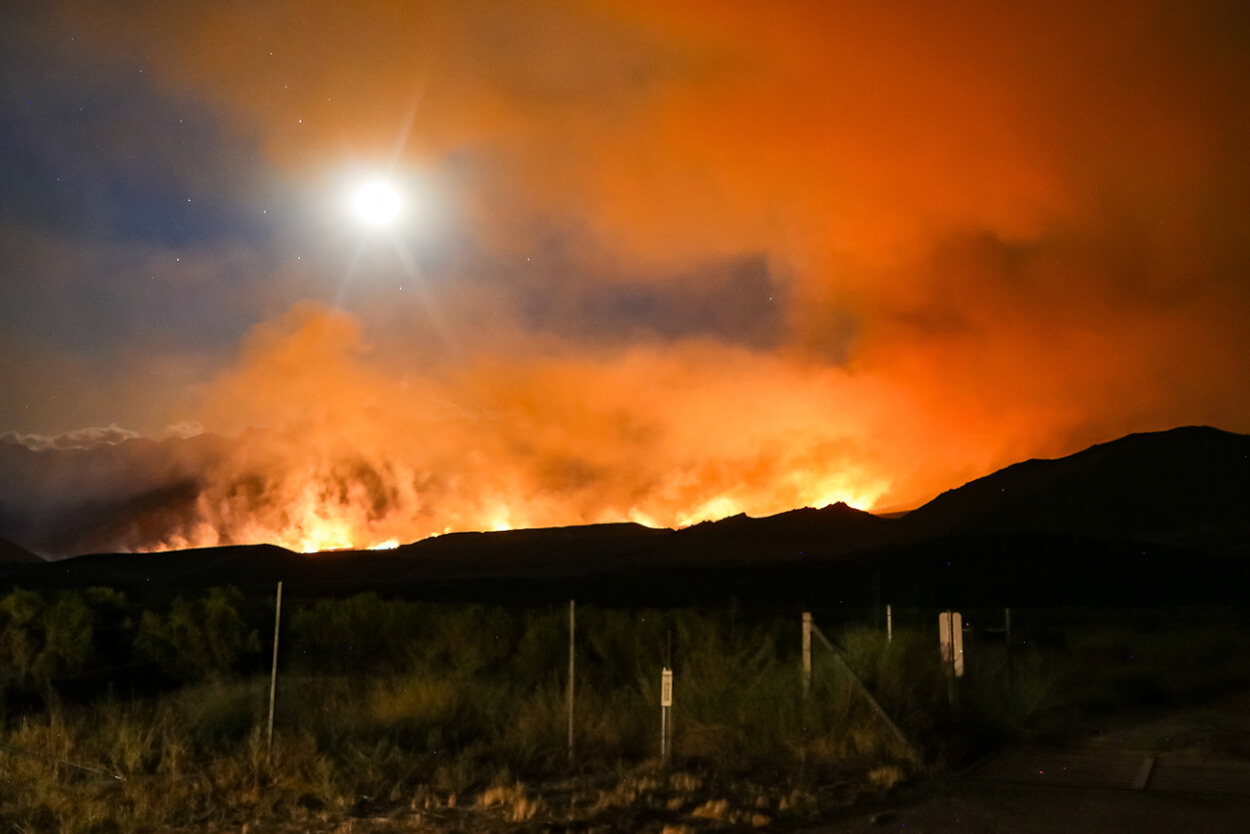Two Cal Poly professors recently secured a patent for their innovative approach in curbing wildfire spread, using a method that leverages equipment within power grids to detect a blaze a mile away from the transmission line in under a minute.
Electrical engineering Associate Professor Majid Poshtan and computer engineering Associate Professor Joseph Callenes-Sloan grounded their method on the observation that radiated heat from a fire changes transmission line temperatures, leading to expansion of the line and subsequent sag.
By tracking line temperatures and sag, the duo determined that wildfires can be quickly identified around electric transmission networks.
“Our approach does not add any cost or equipment, because we would be using what is there – power supply and infrastructure – but we take that equipment and give it a smartness,” Poshtan said.
Their patent, “Using Power Infrastructure for Wildfire Detection,” is attracting significant interest from utility companies interested in technology that can aid efforts to limit wildfires due to power line-related issues.
“We are bringing attention to Cal Poly, which has the potential to become the center of wildfire studies,” Poshtan said.


Poshtan and Callenes-Sloan teamed up on a prior research project, quickly discovering that their collective expertise in electrical and computer engineering made them a dynamic duo.
“We both wanted to partner with industry to protect people and communities,” Callenes-Sloan said.
Coming from the Midwest, Callenes-Sloan didn’t experience the wildfire risks so prevalent in the West but was motivated to get involved after watching the Camp Fire – caused by a faulty electric transmission line – decimate the northern California town of Paradise in 2018.
Poshtan had a personal interest in exploring solutions for California wildfires, driven by a desire to do anything he could to help people and the environment.
Near the time the Camp Fire ignited, Poshtan discovered a sensor developed by Ampacimon, an electricity grid monitoring company, specifically designed to track the health and operation of overhead transmission lines.
“I thought that we could add a feature to an existing sensor that could be used for detecting fire,” said Poshtan, who then began exploring the concept with Callenes-Sloan.
Their idea formed the foundation of a Summer Undergraduate Research Program (SURP) project in 2019 when the professors collaborated with a student team to invent wildfire detection technology at the core of their novel approach.
“All of us teamed up toward the common goal,” Callenes-Sloan said. “That project was instrumental in kicking all of this off.”
The SURP project inspired other students who later joined the lab to launch the startup Perch Sensing Inc., where they are conducting research on fires occurring in the wildland-urban interface, aiming to offer protection to vulnerable communities.
The project also propelled Poshtan and Callenes-Sloan to advance their innovation in pursuit of a patent.
“Heat will cause a line to sag, but we wanted to identify whether that heat was caused by electric energy, the sun or a wildfire,” Callenes-Sloan explained. “That’s where our algorithm comes into play.”
They ultimately pioneered an approach that will enable an entity not only to detect a fire but to determine its direction and speed, with updates coming every 25 seconds.
“The wildland-urban interface is a vulnerable area to mitigate and manage, so a sensor that gives us situational awareness is critical,” Callenes-Sloan said.
Having secured patent approval, they are fielding queries from utility companies interested in integrating their system into existing power line sensors.
Businesses now can seek a license from the patent holders – Callenes-Sloan, Poshtan and Cal Poly – to implement the invention in the fight against wildfires.
“In the beginning, we asked ourselves, ‘Is there a way we can help with our technical background?” Callenes-Sloan said. “So, we took our skills and applied them to a method aimed at protecting people and communities, and we believe it will have a real-world impact.”
By Emily Slater
Sadly, Joseph Callenes-Sloan died on Dec. 27, 2023. Learn more about the impact he made by visiting his tribute here.


